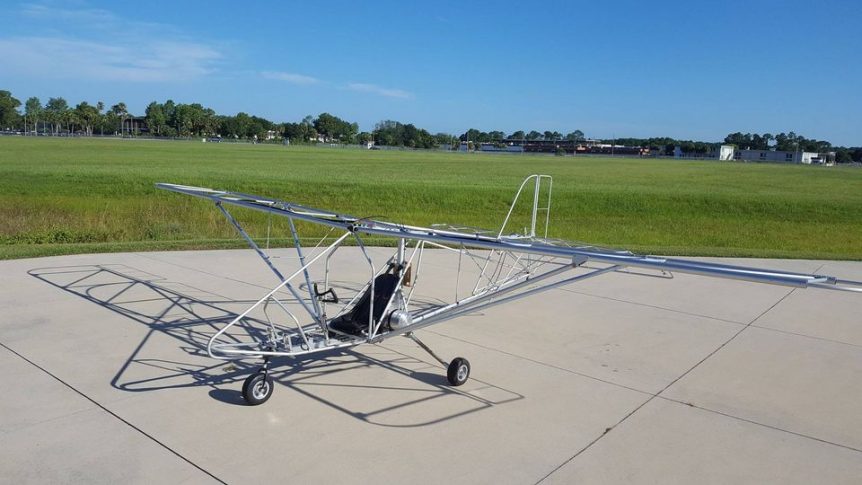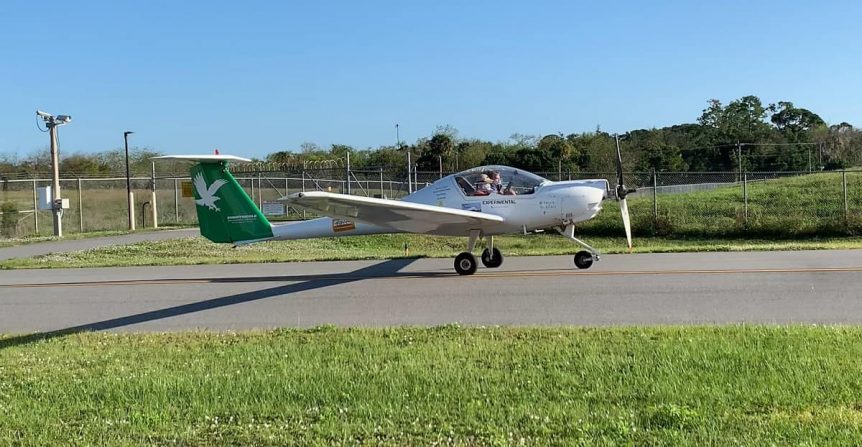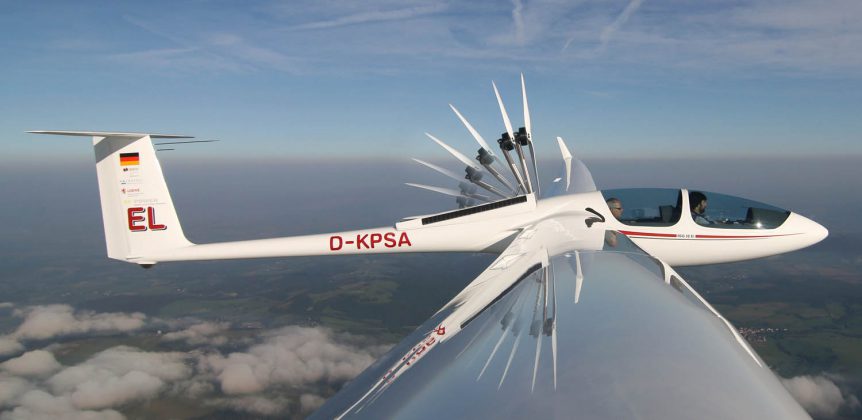Heart Aerospace, a Swedish startup, has teamed with BAE Systems, a veteran British aerospace supplier, to help with powering its 30-seat, battery-powered airliner. The four-motor craft will include a very large battery pack under the passenger compartment. The need for safety should be obvious. Adding eleven seats to its original 19-seat platform, Heart also brings a turbo generator on board, enabling flights up to 400 kilometers (250 miles) with 30 passengers, or even 800 kilometers (500 miles) with 25. These figures include normal airline range reserves. Partners include BAE Systems, Swedish aerospace group Saab, avionics supplier Garmin, and Aernnova, a Spanish airframe specialist. BAE’s UK-based group’s Controls and Avionics Solutions operation in upstate New York will oversee the batteries and their control and monitoring. This fits BAE’s expertise, with more than 25 years of experience electrifying large, heavy-duty industrial vehicles with over 15,000 power and propulsion systems in service worldwide. This will be critical considering the placement of the batteries. …
Aerolite 103 – As Simple As Aerial EVs Get
Shown and flown at this year’s Sun ‘n Fun and AirVenture, the Aerolite 103 is a well-tested, best-selling ultralight that in FAA Part 103 form is a true ultralight. As an electric aircraft, it’s heavier and faster than accepted ultralight standards but no less a competent flyer registered in the Experimental category. Designed in 1996, and with hundreds of the original two-stroke engine-powered versions flying, Aerolite’s originator Terry Raber sold the rights to Dennis Carley in 2012. Manufacturing moved from Millersburg, Ohio to Delano, Florida. The airplane retains its position as an inexpensive FAA Part 103-compliant ultralight – true to its name. In the last few years, it has also become part of zero-emission flight. Aerolite as an EV One can only wonder where Gabriel DeVault finds the time. Currently working in Hollister, California and Cirencester, England on ZeroAvia’s hydrogen-fueled aircraft, Gabriel was also powerplant developer for Zero Motorcycles. His motors now power several homebuilt aircraft, including his personal eGull …
That’s the eSpirit!
We reported in the blog four years ago that Embry Riddle Aeronautical University not only displayed their eSpirit of St. Louis at AirVenture that year, but ran the motor for the crowd. The crowd included Federal Aviation Administrator Michael Huerta, who sat in the cockpit during the runup. The eSpirit of St. Louis A product of Embry-Riddle, eSpirit is finally making its presence on the taxiway known. Kelly Pratt, writing in the Embry Riddle Aeronautical News, reports, “After nearly four years of perseverance, the Eagle Flight Research Center (EFRC) team at Embry-Riddle is celebrating a milestone in its electric propulsion research: its Diamond HK-36 completed a successful taxi test exclusively on electrical power at the Daytona Beach International Airport.” Erik Lindbergh, grandson of Charles, has been a guiding factor in eSpirit’s development, and the airplane reflects his grandfather’s “notion of balance between aviation and the environment.” The quarter-mile on the taxiway may seem like a short trip, but student Sanay …
Schleicher’s Sustainable Flight for Two
Alexander Schleicher Segelflugzeugbau (sailplane maker) has been crafting high-performance soaring craft since its inception in 1927. Their latest creation, a two-seat, 20-meter (65.6 feet) span motorsegler, the ASG32 El, includes a 25 kilowatt synchronous motor driving a Schleicher-designed 1.55 meter (5 feet) retractable propeller. The motor is a “home help” device, a sustainer motor to keep the ASG 32 El aloft once it is launched by a winch or by being pulled by a towplane. The motor does not allow for self-launching. Its low power, coupled with the airplane’s clean design, does enable a 1.3 meter-per-second (255 feet per minute) rate of climb. The aircraft’s battery is sufficient for 20 minutes of all-out power or 100 kilometers (62 miles) of “sawtooth” flight, short climbs followed by longer glides, even with a full load of two pilots. A single control level raises the motor and propeller into operating position, and when pushed further, turns the motor on and controls the …
Sustainable Aviation Symposium 2016: Would You Believe Eric Darcy Deliberately Blows Up Batteries?
Eric Darcy is NASA’s go-to guy for battery safety. He is Battery Group Lead for Projects & Integration at NASA-Johnson Space Center in Houston, Texas, and consults frequently with the National Renewable Energy Laboratory in Colorado. His talk at the First Sustainable Aviation Symposium was titled, “Passively Thermal Runaway Propagation Resistant Battery Module That Achieves > 190 WH/KG.” The output may not sound like much, being at the middle-to-high end of lithium battery performance: but the promise of passive thermal runaway resistance is all-important. Remember, too, that larger output numbers are usually for individual cells. Putting cells into a battery pack with battery management system (BMS) components, wiring, etc. usually reduces overall performance per weight. A few years ago, Dr. Darcy told his table at lunch during a symposium, that by matching batteries closely (to a fanatical degree, it seemed), overseeing their production under conditions exceeding six sigma quality control levels, and testing them intensely, he had built battery packs for space …
Silent 2 Electro Certified in Germany
Luka Znidarsic shared this happy message this morning. “We are very proud to inform you, that the SILENT 2 Electro, equipped with our FES system, has been awarded Type Certification by the German Aero Club (DAeC). “This is the very first electric powered Ultralight sailplane certified, by DAeC. This represents a significant milestone in gliding history, which marks a new age of technology!” We hope this breakthrough in Germany encourages our own Federal Aviation Administration to review their schedule for electric aircraft certification. Such rule making would allow sales of existing electric motorgliders and light aircraft and encourage others to step up development of these alternatives to fuel-burning lightplanes. The Type Certificate gives some clear ideas of the technology incorporated in the very elegant little bird. The 13.2 meter-span airplane has a 22 kilowatt (peak power) motor and electronic speed controller of the Znardnic’s own design for instance. This motor can run at 20 kilowatts continually and swing a one-meter propeller at 4,500 …
A Smart Battery Management System and Multiple Sensors
Fraunhofer and the Hochschule Esslingen University of Applied Sciences have created an electronic race car that they will show at the Sensor + Test Measurement Fair in Nuremberg, Germany from May 14 through 16. Not only electrically driven, the innovative vehicle holds a number of sensor and control systems that might be of interest to electric aircraft designers. EVE, the product of the school and Fraunhofer’s labors, can sprint from 0 to 100 kilometers an hour (62 mph) in 3.6 seconds with its twin 60 kilowatt, 4,500 rpm motors, and reach a top speed of 140 km/hr (86.8 mph). Its 8 kilowatt-hour lithium polymer batteries allow only a short run of 22 kilometers (13.64 miles) though, not surprising in terms of high power outputs pulling the cells down quickly. Electrical engineering students from the e-racing team at the Hochschule designed the 300 kilogram (660 pound) car as an elective project to augment their studies, and ran it at the International Formula …




